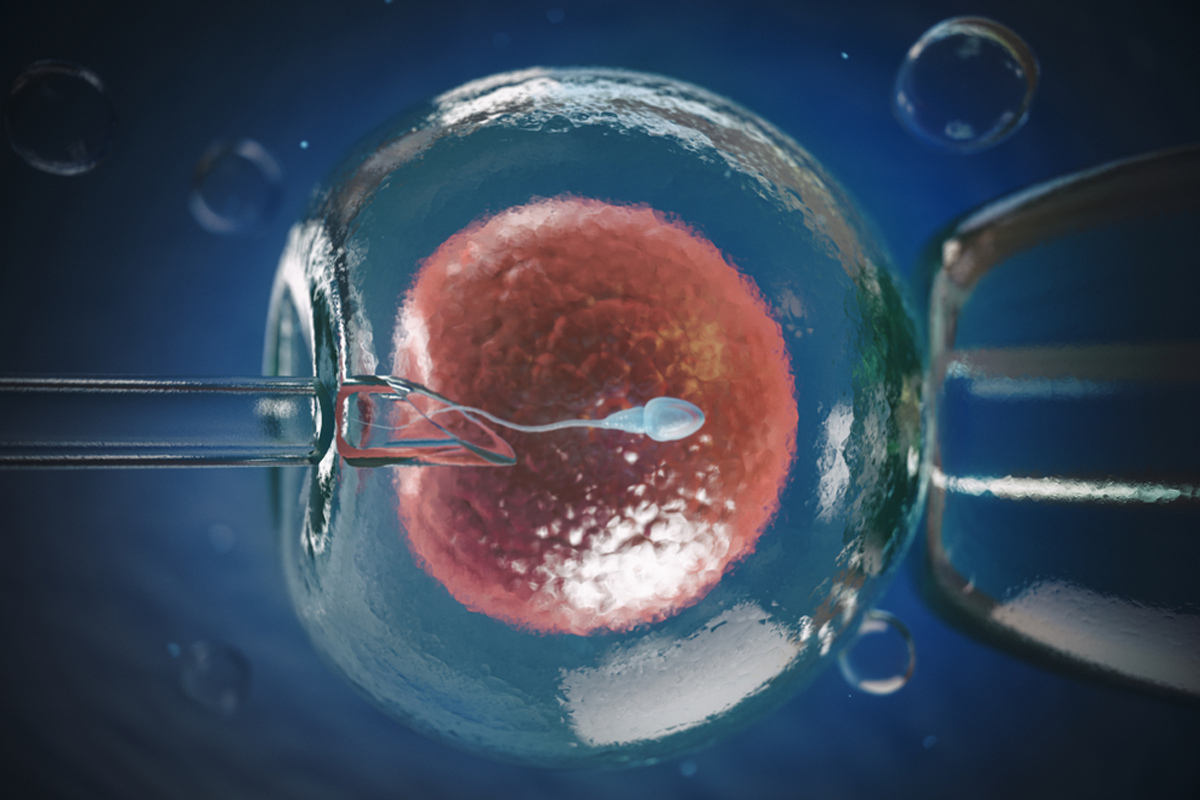
IVF / MICROINJECTION TREATMENT STAGES
The duration of tube baby application changes according to the treatment type selected. Long protocol is applied as the most common in the treatment. The treatment steps of this protocol are these:
- FRONT CYCLE
Birth control pill is given to the patient on whom the treatment will be applied with the first menstruation period. The aim of this is to prevent an ovary cyst which will hamper to begin the treatment in the following month and enable the patient to menstruate on time. An analogue of “gonadotropin-releasing hotmone” (GnRH) is added into the treatment on the 21st day of the menstruation. This very effective anti-hormone is given as nasal spray or daily injection. The analogue presses the activities of a small gland that is known as hypophysis. Hypophysis normally controls the secretion of two important reproductive hormones, follicule stimulating hormone (FSH) and luteinizing hormone (LH). These hormones normally stimulate one follicule production of the ovary every month. It temporarily stops the normal connection between the analogue hypophysis and ovary. This drug is continued until collection of the eggs. Birth control pill is used for 21 days. New menstruation period begins within 10 days after the pill finishes. - STIMULATION OF OVARIES
In order to stimulate the ovaries, drugs like injection which contain hormone are applied on the 3rd day of the new menstruation period. The aim of using these drugs is to provide the development of more than one egg in the ovaries. This increases the chance of pregnancy. The stimulation duration of the ovaries varies from person to person. The length of this duration is determined by the reaction of the ovaries to the drugs used. The average duration is about 10-12 days. In this period, egg development is followed with hormone and ultrasound every other day. - COLLECTION OF THE EGGS
When egg cells reach a certain maturity and size, they are cracked with a hormonal injection which causes eggs to crack. Eggs are collected 34-36 hours later after the injection. To make this injection on time is very important.
Collection of the eggs: The patient is accepted as hungry in the morning. Because the process is carried out by making the patient sleep, it is PAINLESS. The operation lasts 20-30 minutes in total. The eggs are reached through vaginal way with the help of ultrasound for IVF. Ultrasound helps a small injection that absorbs the eggs out to be directed to right direction. The egg number may be 10-12 per patient and this can be from 1 to 40. No egg may be collected despite sufficient examination. Collection of eggs does not require staying in hospital. You can go your home a few hours later.
- FERTILIZATION OF THE EGGS
The egg cells obtained are fertilized with the classic tube baby or microinjection according to sperm cell quality in the laboratory conditions. EMBRYO is produced by the fertilization of the egg cell by the sperm cell. Embryo is the main piece of the baby developing within mother’s womb. Fertilization occurs in nearly 12-15 hours and is detected under the microscope. The result is given to the patient via telephone. In addition, time is decided for transfer of the embryos. - EMBRYO TRANSFER
The fertilized eggs are called as pre-embryo or zygote and transfer is made 48-72 or even 120 hours later after the collection of the eggs. The time of transfer depends on the amount and quality of the embryos. The embryos are passed through the womb with a catheter that is a thin plastic pipe and transferred into the womb. The embryo amount to be transferred is generally determined with the gynecologist before the application. Embryo transfer is simple and generally painless. You can be released from hospital after a short resting for half an hour. A pregnancy test is applied to the patient about two weeks later and hormonal support is given during this period.
